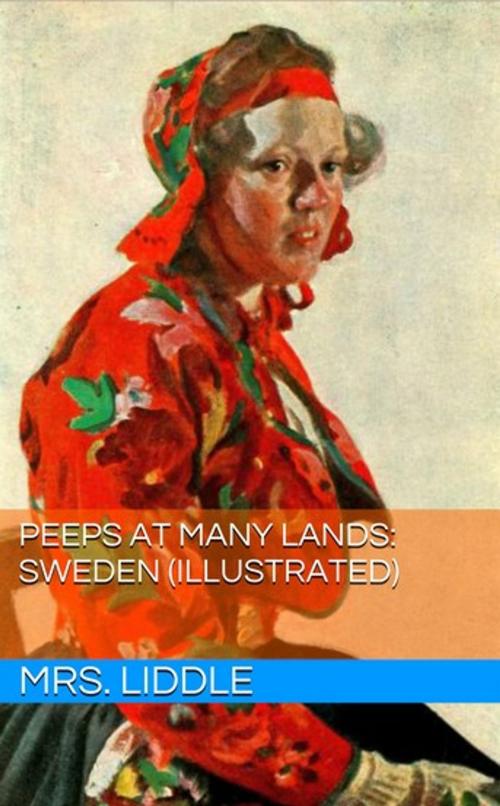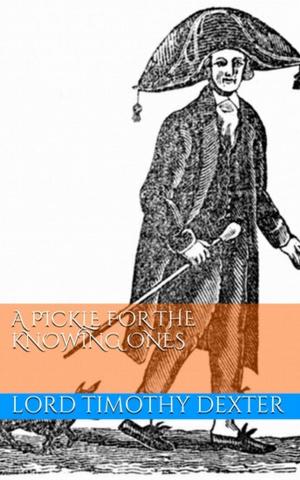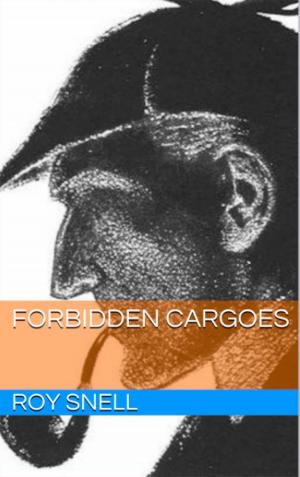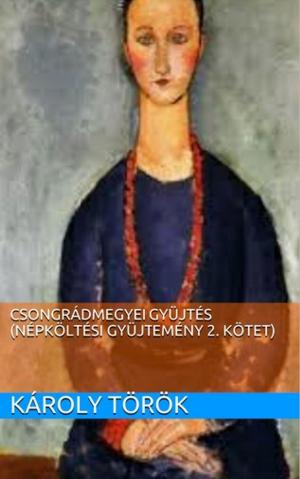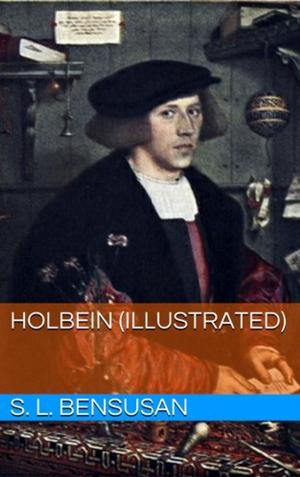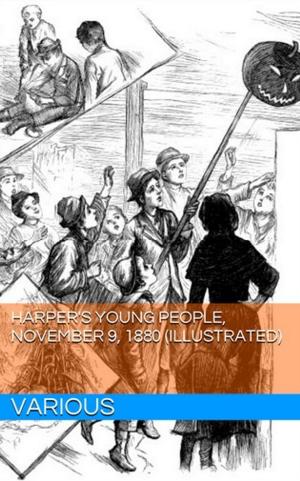Peeps At Many Lands: Sweden (Illustrated)
Nonfiction, Social & Cultural Studies, Social Science, Anthropology, Sociology| Author: | Mrs. Liddle, William Liddle | ISBN: | 1230000159688 |
| Publisher: | Lost Leaf Publications | Publication: | August 13, 2013 |
| Imprint: | Language: | English |
| Author: | Mrs. Liddle, William Liddle |
| ISBN: | 1230000159688 |
| Publisher: | Lost Leaf Publications |
| Publication: | August 13, 2013 |
| Imprint: | |
| Language: | English |
CONTENTS
CHAPTER PAGE
I. SWEDISH HISTORY 1
II. GOTHENBURG 10
III. A SUMMER HOLIDAY AT MARSTRAND 15
IV. ACROSS SWEDEN BY WATER 21
V. STOCKHOLM—I. 26
VI. STOCKHOLM—II. 31
VII. THE SWEDES AT WORK 36
VIII. THE SWEDES AT PLAY 40
IX. EDUCATION IN SWEDEN 47
X. DALECARLIA 52
XI. CUSTOMS 57
XII. THE ISLAND OF GOTHLAND AND TOWN OF VISBY 63
XIII. FAIRY-TALES 69
XIV. JUL, OR CHRISTMAS 75
XV. MIDSUMMER 80
XVI. SOME WELL-KNOWN SWEDES 84
CHAPTER I
SWEDISH HISTORY
In one of the most beautiful and romantic districts of Sweden there is one of the oldest copper-mines in the world. It is situated at Falun in Dalecarlia. About 400 years ago a young man might have been seen looking into the open mine. He was full of thought and anxiety, for was not his country in the hands of the Danish King, Christian II., a cruel tyrant? and was not he himself being pursued and driven to seek concealment, as he was a direct descendant of the ancient Kings of Sweden? He had suffered much, but had never given up hope. He stood there thinking of his country’s down-trodden condition, hopeful, trustful, and resolute, resolving to deliver his native land from the foreign yoke. He remembered how the miners had fought in days of old for their country. He would rouse them so that they would do it again. He donned the peasant costume, and became as one of themselves. He worked alongside them in the mines, and soon became a great favourite because of his bright, winning manner. He took every opportunity of speaking to them of the subject that lay nearest to his heart—the freedom of their native land. He told them of the massacre of many nobles at Stockholm, of ladies of rank being thrown into the sea, of boys being whipped to death, and of peasants hanged for the slightest offence at the order of King Christian, the Nero of the North.
After working in the mine for some time, he was recognized. He then took service with an old college friend, Anders Persson, of Rankhytta, who sympathized with him, but was unable to help him. He sent him to Squire Arendt Persson, who, eager to win the reward offered for Gustavus Vasa’s capture, betrayed him to the Danish soldiers. Arendt’s wife suspected treachery, and let the young man down with a towel from a window in the loft to the snow-covered ground outside, where a trusty servant was waiting with a sledge to convey him to a place of safety. When Persson arrived next morning with soldiers, he found the bird flown.
On another occasion he took refuge in a hut in the forest. The Danes had so entirely encircled the district, that Gustavus seemed completely in their power. A friend, however, hid him in a load of straw, and proceeded towards Rättvik. They were surrounded by Danish soldiers, who stopped the cart and roughly thrust their sharp pikes into the straw. Gustavus was pierced in the side by a spear. The pain was great, but he endured it without a groan. Satisfied he could not be there, the soldiers rode on. Blood, however, was seen on the ground. To account for this, the driver had cut his horse’s leg close down to the hoof.
As soon as he recovered from this wound, he went with renewed vigour and zeal from hut to hut, exhorting the people to rise and throw off the Danish yoke. This led him into great difficulties and great suffering. He was often in want of food, and afraid to ask shelter. At one time he had scarcely a moment to conceal himself under a fallen tree before a party of Danish soldiers galloped up.
At last he made his way to Dalecarlia, where he had made his first venture. The Danish soldiers again got on his track. He rushed to the house of a peasant, and found the wife at her spinning-wheel. When she knew who he was, she put him into a dark cellar underneath the kitchen-floor, and covered the trap-door with a large brewing vat.
CONTENTS
CHAPTER PAGE
I. SWEDISH HISTORY 1
II. GOTHENBURG 10
III. A SUMMER HOLIDAY AT MARSTRAND 15
IV. ACROSS SWEDEN BY WATER 21
V. STOCKHOLM—I. 26
VI. STOCKHOLM—II. 31
VII. THE SWEDES AT WORK 36
VIII. THE SWEDES AT PLAY 40
IX. EDUCATION IN SWEDEN 47
X. DALECARLIA 52
XI. CUSTOMS 57
XII. THE ISLAND OF GOTHLAND AND TOWN OF VISBY 63
XIII. FAIRY-TALES 69
XIV. JUL, OR CHRISTMAS 75
XV. MIDSUMMER 80
XVI. SOME WELL-KNOWN SWEDES 84
CHAPTER I
SWEDISH HISTORY
In one of the most beautiful and romantic districts of Sweden there is one of the oldest copper-mines in the world. It is situated at Falun in Dalecarlia. About 400 years ago a young man might have been seen looking into the open mine. He was full of thought and anxiety, for was not his country in the hands of the Danish King, Christian II., a cruel tyrant? and was not he himself being pursued and driven to seek concealment, as he was a direct descendant of the ancient Kings of Sweden? He had suffered much, but had never given up hope. He stood there thinking of his country’s down-trodden condition, hopeful, trustful, and resolute, resolving to deliver his native land from the foreign yoke. He remembered how the miners had fought in days of old for their country. He would rouse them so that they would do it again. He donned the peasant costume, and became as one of themselves. He worked alongside them in the mines, and soon became a great favourite because of his bright, winning manner. He took every opportunity of speaking to them of the subject that lay nearest to his heart—the freedom of their native land. He told them of the massacre of many nobles at Stockholm, of ladies of rank being thrown into the sea, of boys being whipped to death, and of peasants hanged for the slightest offence at the order of King Christian, the Nero of the North.
After working in the mine for some time, he was recognized. He then took service with an old college friend, Anders Persson, of Rankhytta, who sympathized with him, but was unable to help him. He sent him to Squire Arendt Persson, who, eager to win the reward offered for Gustavus Vasa’s capture, betrayed him to the Danish soldiers. Arendt’s wife suspected treachery, and let the young man down with a towel from a window in the loft to the snow-covered ground outside, where a trusty servant was waiting with a sledge to convey him to a place of safety. When Persson arrived next morning with soldiers, he found the bird flown.
On another occasion he took refuge in a hut in the forest. The Danes had so entirely encircled the district, that Gustavus seemed completely in their power. A friend, however, hid him in a load of straw, and proceeded towards Rättvik. They were surrounded by Danish soldiers, who stopped the cart and roughly thrust their sharp pikes into the straw. Gustavus was pierced in the side by a spear. The pain was great, but he endured it without a groan. Satisfied he could not be there, the soldiers rode on. Blood, however, was seen on the ground. To account for this, the driver had cut his horse’s leg close down to the hoof.
As soon as he recovered from this wound, he went with renewed vigour and zeal from hut to hut, exhorting the people to rise and throw off the Danish yoke. This led him into great difficulties and great suffering. He was often in want of food, and afraid to ask shelter. At one time he had scarcely a moment to conceal himself under a fallen tree before a party of Danish soldiers galloped up.
At last he made his way to Dalecarlia, where he had made his first venture. The Danish soldiers again got on his track. He rushed to the house of a peasant, and found the wife at her spinning-wheel. When she knew who he was, she put him into a dark cellar underneath the kitchen-floor, and covered the trap-door with a large brewing vat.
